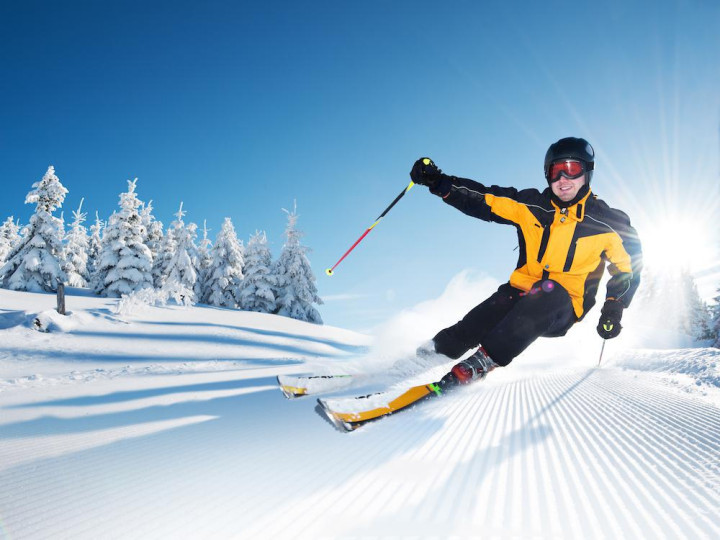Remedying the Impact of Winter Sports on Knees and Back injuries

The winter sports season is upon us, and so too are winter sports injuries. No matter the sport you participate in, such as snowboarding, skiing, or ice skating, your back and knees can bear the brunt of your winter fun.
With a little preparation, though, you can give yourself the best chance to stay injury-free. Today, we’ll look at how you can minimize the potential effects that winter activities can have on your back and knees.
Prevalence of winter sports injuries
About 200,000 men, women, and children seek medical care for winter sports injuries in the United States each year. Countless others simply rest and recover from their aches and pains at home. Winter sports enthusiasts often need to pack their participation into a season based around changing weather conditions.
Since the opportunity to ski on fresh powder may be limited to a few days each year, for instance, you might hit the slopes without adequate preparation or conditioning, or you might feel the urge for “one more run” even though you’re tired. Who knows when you’ll have the chance to do it again, right?
Both of these attitudes may lead to injury, since you’re modifying your performance to fit the conditions, rather than vice versa. Inadequate conditioning, lack of warming up, and playing after you’re tired can all lead to strains, sprains, aches, and pains that keep you away from your sport.
Back and knee pain
When your functional mechanics aren’t in peak condition, you can expect unbalanced loads on your body, whether you’re skiing, skating, or hiking over snow and ice. Your back and knees often bear the brunt of such imbalances. The amount of force absorbed by these body structures can increase when surrounding soft tissues, such as muscles, tendons, and ligaments, aren’t providing adequate support.
Conditioning and warming up are two key elements for training your entire body to share the load so your knees and back aren’t always bearing the brunt of your activities. Furthermore, you should also perform gentle stretches immediately after your activities to ward off tissue strain injuries.
Knowing when you’ve had enough is also key. As you tire, your form and reaction timing can suffer, which can lead to injuries.
When winter sports take a toll
Contact Valley Neurology and Pain at any of its three locations whenever you overdo it during winter activities. If you have pain, you don’t need to let it interfere with your daily living. Acute back pain and knee pain can often be treated with injection therapy. These injections can address pain and inflammation at the site of an injury and help keep you mobile and pain-free. injection therapy for pain can include:
- Epidural injections
- Facet injections
- Nerve blocks
- Sacroiliac injections
- Joint injections
At Valley Neurology and Pain, with three convenient Arizona locations in Phoenix and Peoria, you are never a number. Your consultation, examination, and treatment are always administered by a highly-qualified physician. When it comes to back pain, we have several experienced physicians who can help you
There’s no need to simply accept pain as the cost of participating in winter sports. To learn more, request an appointment online or over the phone with Valley Neurology and Pain today.

